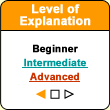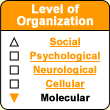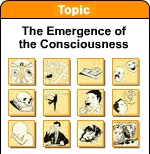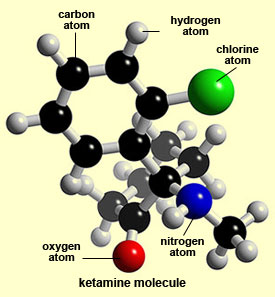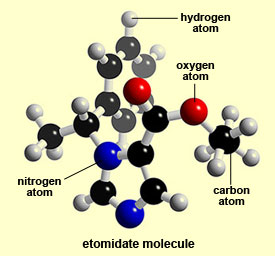| |
| |
 |
The Sense of Self |  |
| | |

 |
 |
 |
One should avoid jumping to conclusions
about the correlations that exist between a few properties of consciousness and
the sometimes rather peculiar properties of the world of the infinitely small.
Molecular and quantum theories of consciousness are often criticized for this
tendency to try to turn such correlations into overall explanatory models of consciousness.
For example, the correlation between the administration of certain anaesthetics
and loss of consciousness might be used to justify a model that assigns a central
role to the proteins
of the microtubules that are affected by these substances. Or the unpredictable,
changing nature of consciousness might be linked to the principle
of uncertainty and the superimpositions of states in quantum physics. Even
if a new molecular mechanism were in fact found to be essential for consciousness,
there would still be little chance that this mechanism alone explained the entire
complex phenomenon of human consciousness. Instead, this mechanism would have
to be integrated into a theory that provided explanations at higher levels of
organization (cellular, neurological, psychological, etc.) as well. An excellent
analogy is the way that the molecular mechanisms involved in the body's immune
defences must be combined with environmental
and psychological factors to explain these defences completely. |
| |
| CAN QUANTUM EFFECTS EXPLAIN CONSCIOUSNESS? | |
Most of the hypotheses
that try to draw connections between subjective consciousness and physical events
in the brain do so at the cellular level: that of individual neurons or neuronal
assemblies. This approach—the search for the
“neural correlates of consciousness”—is based on the assumption
that the key to conscious processes can be found in the activities of these nerve
cells. And in fact, the activities of the neurons and their communications with
one another are central to many models of consciousness, such as those involving
thalamocortical
loops, synchronous
40 Hz oscillations, or the influence
of the intralaminar thalamic nuclei on neuronal synchronization. But
there are also many theories that attempt to relate the functioning of human consciousness
to structures at the molecular level, and even to the very strange effects of
the quantum
physics of the infinitely small. As scientific methods for investigating the
infinitely small become more refined, more and more mechanisms will likely be
discovered below the neuronal level, and it will be no surprise if some of these
new mechanisms are indeed found to have an effect on human consciousness. One
molecule that may well play a role in the mechanisms of consciousness is the NMDA
receptor. This large protein molecule takes the form of a channel passing
through the neuronal membrane and serves as the binding site for glutamate, an
excitatory neurotransmitter
released into the synapses
of a great many neurons. Once released into the synaptic gap, glutamate binds
to the postsynaptic neuron’s NMDA receptor, causing this channel to open
and thus initiating a
whole series of biochemical reactions that make this synapse more efficient.
NMDA receptors thus act as critical components in
the mechanism by which neurons form lasting associations by strengthening their
connections with one another, thus creating what are known as neuronal
assemblies. These assemblies occupy a prominent place in many neurobiological
models of consciousness, so it seems entirely reasonable to assign the NMDA
receptor molecule a significant role in the conscious processes of the human brain.
And that is precisely what German neurobiologist
Hans Flohr has done. Flohr suggests that those synapses that have NMDA
receptors are the ones that are most readily strengthened when an organism detects
regularities in its environment. Flohr also points out that anaesthetics
such as ketamine block the normal excitatory effect of glutamate on NMDA
receptors and cause loss of consciousness. | |
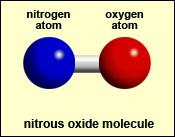 | Another
anaesthetic, nitrous
oxide (“laughing gas”) is a completely different type of molecule
from ketamine. The nitrous oxide molecule acts elsewhere in the series of reactions
induced by the NMDA receptors but ultimately produces similar effects. |
Flohr therefore concludes that normal functioning
of the NMDA receptors and their secondary
messengers is necessary for consciousness. But
many objections have been raised to Flohr’s approach, which does not involve
any quantum effects as such. Some of his critics have pointed out that besides
the NMDA receptor, there are countless other molecular mechanisms that must work
properly if normal conscious function is to be maintained. Others critics have
observed that normal functioning of the NMDA synapses is also important for unconscious
processes and for the forming of neuronal assemblies that are not involved
in thought processes.
| Another major objection to Flohr’s hypothesis
is that some other anaesthetics operate rather differently from ketamine and nitrous
oxide. Etomidate, for example, puts subjects to sleep by potentiating their
GABA
receptors. According to Flohr’s hypothesis, etomidate would have to
inhibit the NMDA receptors indirectly, but we have no evidence that it does. And
even if it did, the two drugs should have the same anaesthetizing effects. But
that is not the case either: etomidate does not have the same analgesic effects
as ketamine. | |
This raises an even broader problem. There
are countless substances that can render us unconscious, and they do so in such
different ways that the resulting state of unconsciousness must be regarded as
something more than the mere lack of something called “consciousness”.
Hence, though scientists can generally attempt to understand phenomena by observing
the effects of their absence, when the phenomenon in question is consciousness,
this approach is quite insufficient. |
|

